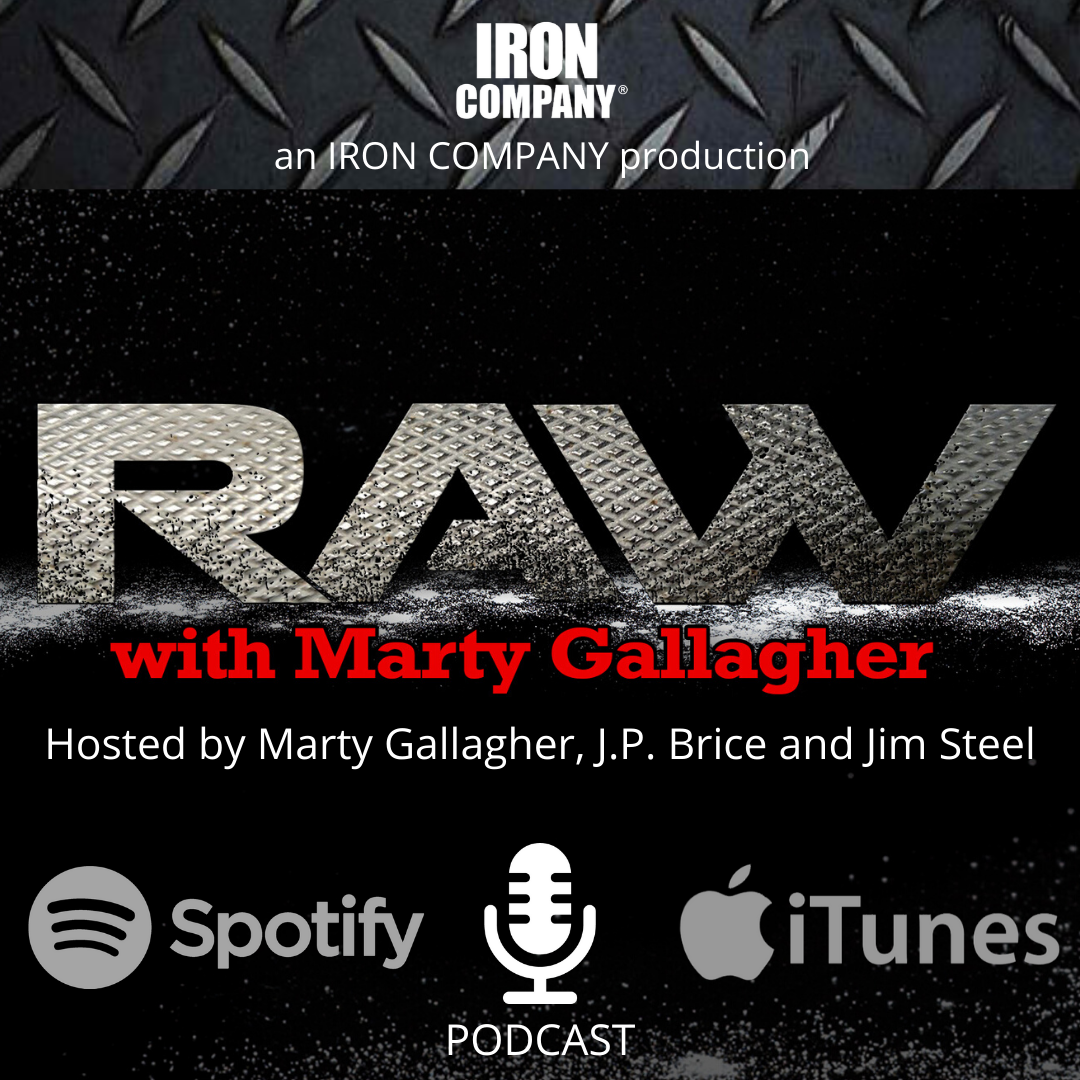
Have a personal record for everything!
If you do not know what your personal record is, how can you seek to exceed it?!
Ice Cold Kirk Karwoski (above): in 2003 I talked Kirk into doing an exhibition at a competition in Laughlin, Nevada. He only took six weeks to train seriously. This was a completely raw meet; he wore only a weightlifting belt. Weighing 239 he squatted 826, bench pressed 469 and deadlifted 776-pounds. These two photos were taken when I went to his room to wake him up. He rolled out of bed groggy from the previous day’s travel. I had my Nikon and said, “Show me your legs.” He grudgingly complied. When he was half dressed, I took the ¾ shot of him in his jeans. Two seconds after I took this shot, he hissed, “Dude! Seriously – put that goddamned camera away before I throw it out the window!” Glad I got these.

Kirk Karwoski Beast Legs
I am continually flabbergasted when I start working with someone new and they are unsure or fuzzy about their current personal record in the major resistance training exercises. If we are training the bench press, I might ask, “So, what is your best 8-rep bench set, touch-and-go style?” They get a blank look and hem and haw and take a few minutes to formulate a reply. And then there is no certainty to the answer. Since age 12, I can tell you any current best in any lift, for any rep range using any technique.
Hardcore Iron Men establish a personal record in every lift, every rep range, and for every exercise and every variation. The idea is to establish and log current best efforts and then work to exceed those benchmarks. That is where the gains lie. In the bench press, any serious strength athlete can tell you what their current PR (personal record) is in the bench press for a single rep, what their current best for a double, triple, 5, 8 or 10-rep set. They can tell you their current personal record in the flat bench, in all the rep ranges and the benchmarks will be different when pausing the weight bar on the chest.
Iron Pros can relate their personal record in the wide-grip and narrow-grip bench, paused and touch & go style. They can tell you recent bests efforts in all the flat-bench press rep ranges using dumbbells – want to know what they are capable of in the 45-degree incline press using a barbell or dumbbells, paused or T&G? They can tell you because they log every set of every exercise. Logging provides the report card on current efforts and provides the benchmarks that the hardcore always seek to exceed. You only improve physique and performance by exerting with Herculean effort.
No one sets personal record in every exercise in every session. Our job, our mission, is to equal or exceed 100% of current capacity, our capacity on that day in that session. Keep in mind that capacity shifts: you might be having a triple high day on Saturday and the worst day of your life the following Thursday; regardless if capacity is diminished, enhanced or normal, the goal is to bump up against the limit of momentary capacity. This triggers the adaptive response, hypertrophy and what I call, the hormonal tsunami.
Increases in strength and muscle hypertrophy are inexorably connected to the severity of the effort, how much struggle was invoked? If you take the struggle out of resistance training you eviscerate results: resistance training is all about resistance, struggle. A man can generate 102% of his capacity and fail to equal or exceed his best previous effort. Still, he will have succeeded in tripping the hypertrophy switch. Improvements in strength, size, power and muscle are a result of trauma-inducing intensity, pure unadorned physical effort.
If you are ignorant of what you are capable of, if you just do what you can do with no real forethought or afterthought, then every exercise session is Ground Hog Day, you are just doing the same workout over and over, treading water, maintaining whatever you have, at best. The central idea behind high-intensity, low-volume resistance training is continually striving to attack some personal record in some exercise for a particular rep range. Herculean effort is what triggers hypertrophy and strength gains.
If you do not know your current limits, it makes it hard to exceed those limits. Athletes do not become more muscular and stronger engaging in a steady diet of sub-maximal training. Without limit-equaling or limit-exceeding effort there is no physiological incentive for the body to grow new muscle. Growing muscle is a defensive measure only invoked when stresses are equal to, or past, current capacities, be they enhanced or diminished. How can you equal or exceed capacities if you are unaware of what those capacities are?
Old School lifters and bodybuilders carried around little spiral notebooks that they kept in their gym bags. In between every single set they would jot down the poundage and reps for the just completed set. They would not wait until the end of the workout to log in case they misremembered. They trained themselves to sit and log after every set – for example here would be a typical log entry…
Date 11-6-20, Saturday bodyweight: 175 how feeling? – a little dragged out
Bench press, regular grip, touch-and-go, 135x12, 185x8, 205x8, 225x8, 235x7 missed the last rep
Narrow-grip bench press, touch & go, 135x8, 165x8, 195x8! – a new personal record
Incline barbell bench press, paused, 135x8, 165x8, 195x8, 205x8! – a new personal record
Weighted dips, 25 pounds x 10, 45 x 8, then, no weight for 17 reps
Triceps pushdowns, three sets, progressively increased poundage
The sets reps and poundage would be logged as the session unfolded, never trusted to post-workout memory. Logged entries were then reviewed each week to spot trends or weaknesses. Course corrections, tweaks, inflight adjustments were made based on the logged data. It would be inconceivable for a high-level strength athlete to not log. It was expected behavior. We thought about our training sessions heading into them, and we reviewed them post-session. The overarching goal is to establish a pattern of small, incremental increases in strength, size and power. We did not train to stay the same.
The modern equivalent of the spiral notebook with the Bic pen jammed down the spine is the record keeping capability of the iPhone. Nowadays, after every set I have my trainees log the just-completed exercise, poundage, number of reps completed – and any pertinent phrase, i.e., “195x8 is new personal record in narrow-grip touch-and-go style.” also jot down any extenuating circumstances, i.e., ‘I was really off today due to massive amounts of overtime this week.”
The goal of going to the trouble of logging is to establish a series of benchmarks. Once you establish personal record benchmarks seek to exceed them. Even falling short is physiologically beneficial. If you don’t log you should. Otherwise you are just spinning your wheels in the muck and mire of repetitive sameness.
About the Author
As an athlete Marty Gallagher is a national and world champion in Olympic lifting and powerlifting. He was a world champion team coach in 1991 and coached Black's Gym to five national team titles. He's also coached some of the strongest men on the planet including Kirk Karwoski when he completed his world record 1,003 lb. squat. Today he teaches the US Secret Service and Tier 1 Spec Ops on how to maximize their strength in minimal time. As a writer since 1978 he’s written for Powerlifting USA, Milo, Flex Magazine, Muscle & Fitness, Prime Fitness, Washington Post, Dragon Door and now IRON COMPANY. He’s also the author of multiple books including Purposeful Primitive, Strong Medicine, Ed Coan’s book “Coan, The Man, the Myth, the Method" and numerous others. Read the Marty Gallagher biography here.



